
The Livestock Living at the End of the World
Things get hairy when you plop pigs on a subantarctic island.
In the spring of 1866, the American General Grant struck the western cliffside of Auckland Island, a remote, subantarctic mass of rocky land in the middle of the South Pacific. Trapped inside a rocky cavern, the ship began its fateful plunge into the frigid water, dragging most of its passengers down with it. Things looked bleak for the few who survived—the uninhabited island was often plagued by severe winds, heavy downpours, and harsh cold spells. But the castaways benefited from an unexpected resource that helped keep the majority of them alive for 18 months until their eventual rescue. Deep in the forest lay a herd of long-haired, narrow-faced pigs—or rather, strange, precious island pork.
Today, well over a century later, as many as 1,000 of these pigs still plod along the misty shoreline, thrusting their narrow snouts into the earth to find edible roots, flipping beach stones in search of fly larvae, and devouring the occasional whale carcass that’s been washed ashore. “They’ve adapted well,” remarks Michael Willis, director of Rare Breeds International and founder of Willowbank Wildlife Reserve. At his Christchurch nature reserve, Willis cares for a small group of Auckland Island pigs that have been scooped from the edge of the world and transplanted onto mainland New Zealand. “Their tails are hairy, their ears are hairy, and some have a bit of a down on them to stay warm.”
Scrappy, agile, and, according to Willis, “good-natured things,” they’re incredible creatures that were never supposed to exist. Centuries ago, the pigs were plopped on the South Pacific archipelago and have been there ever since. And, while they’re now considered man-made pests ripe for removal, their unique island evolution has rendered them extremely valuable and priorities for preservation.
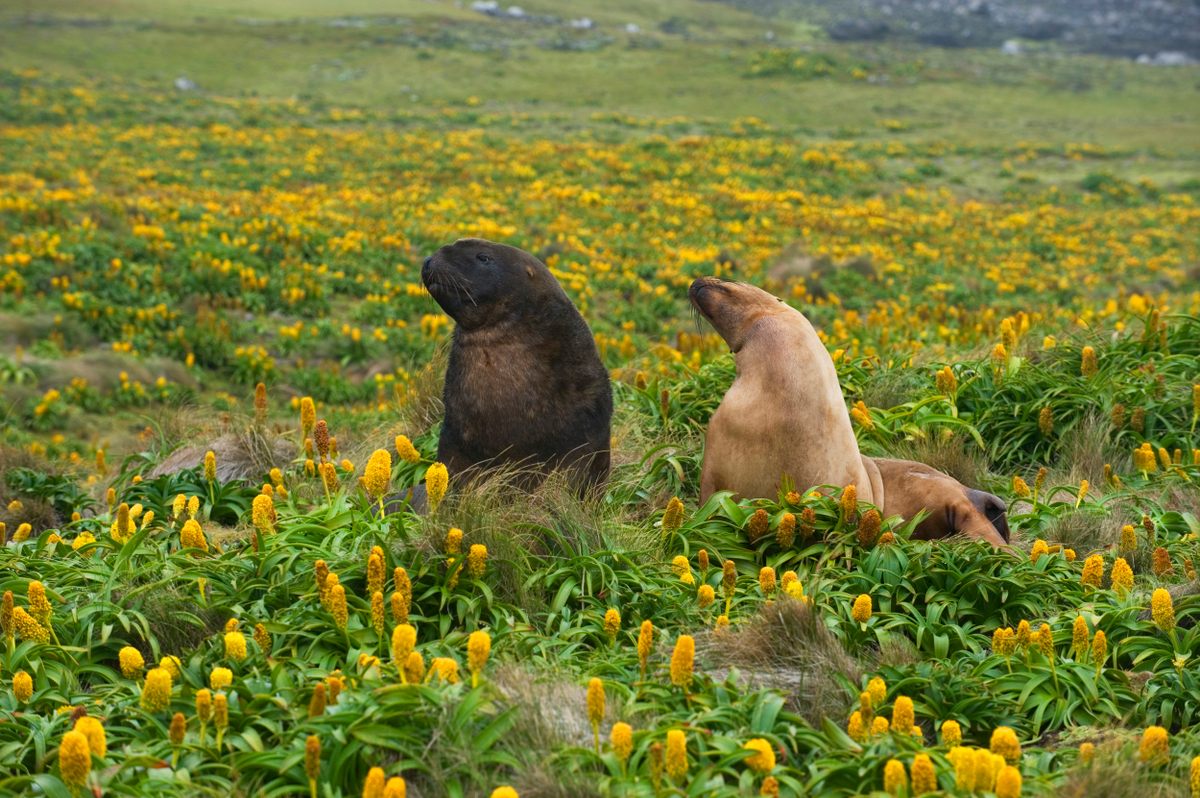
The origin story of the strange swine begins with deception, tragedy, and resourcefulness. The Auckland Islands, an archipelago now considered part of New Zealand, lie over 360 miles south of the main island, where fur seals, sea lions, and whales are drawn to its subantarctic shores each year. By the early-19th century, whalers and sealers had begun cashing in on the abundance. According to local lore, they mischarted the islands by 25 to 30 miles on some early, influential maps, hoping to keep the goldmine they’d discovered a secret. This would have been a devastating distortion to anyone who believed they were sailing into open sea, only to come face to face with huge, rocky cliffs protruding through the mist.
Perhaps unsurprisingly, the General Grant wasn’t the first ship to meet its fate in the cluster of islands, and it wouldn’t be the last. The islands ensnared whalers, sealers, and voyagers sailing along the southern “Great Circle Route,” a common circuit for ships cutting through the South Pacific Ocean. Within the span of a century, at least nine ships met their fate in the islands.
So it was out of concern for castaways that pigs were first brought to the island. British mariner Abraham Bristow was the first European to happen upon the treacherous archipelago in 1806. In the hopes of making the prospect of future shipwrecks a bit less grim, he returned one year later with a sizable posse of grunting, squealing passengers. Upon their release onto the island, the swine survived. Then, they thrived.
Bristow’s first installment of pigs was only the beginning. For nearly a century, the Auckland Islands were subjected to a long, devastating history of livestock liberations. Pigs were plopped ashore again on the main Auckland Island in 1842, followed by a third deposit in the 1890s. By the end of the 19th century, the feral pig population on the main Auckland Island was flourishing.
But while these scrappy survivors were living out a utopian alternative to Lost, they were simultaneously decimating the rest of the island. Yes, they fed a few castaways, but they also scarfed down plant roots, albatross eggs, and penguins. They all but forced white-capped mollymawks into breeding in the island’s steep cliffs, after tossing adult birds from their nests and devouring their eggs and small chicks. According to New Zealand’s Department of Conservation (DOC), they’re largely responsible for the disappearance of over 30 native bird species from the island.
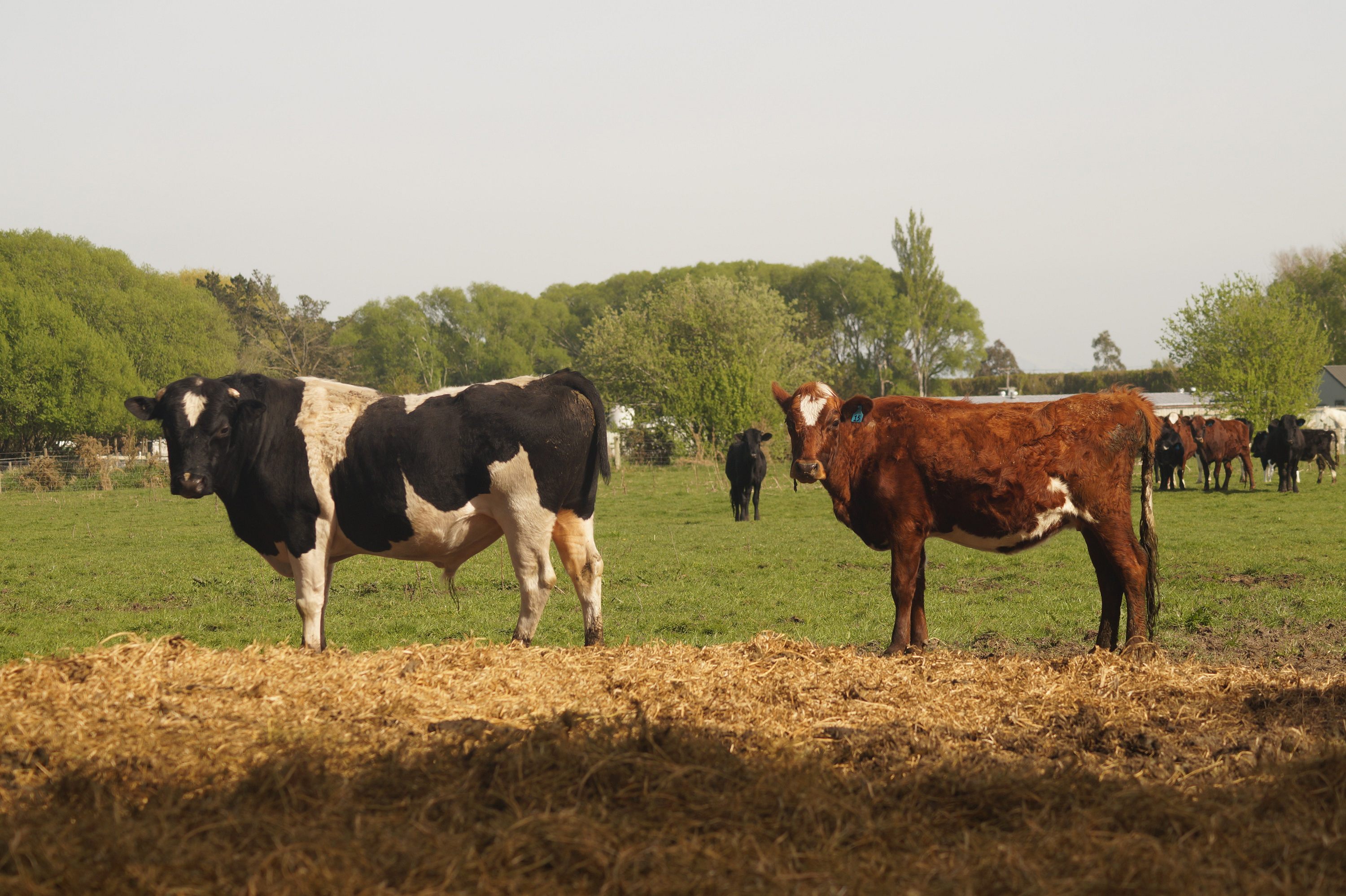
“Pigs affect most of the species present on the island, from the albatross to the megaherbs to the insects in the soil,” says Rose Hanley-Nickolls, DOC Auckland Islands project assistant. “Megaherbs should be flowering across the island, but only a few plants cling on in the most inaccessible places.”
And pigs are only part of the story. Goats were released in multiple locations, and were found to be living on the northwest side of Port Ross, one of the driest and warmest parts of Auckland Island, until the 1990s. Rabbits, too, were introduced to the archipelago when the Victoria Society of Australia deposited a colony on the northernmost island of the cluster, Enderby Island. Several decades later, a small herd of cattle was shuttled there alongside European hopefuls starting a small farming venture. But when the climate proved too harsh, the project, and all the cows with it, were abandoned. For nearly two centuries, the stranded animals lived in isolation within their new home, which, with few to no natural predators, they completely wrecked.
By the 1980s, the DOC had set out to restore the native ecosystems by ridding the Auckland Islands of its non-native pests. By 1992, all goats had been eradicated from the main Auckland island. In 1991, the DOC spent hundreds of thousands of dollars dispatching a sharp-shooting crew to kill all remaining cattle on Enderby Island. When it was time to rid the island of rabbits, they enlisted Willis’s help to round up a few of the creatures before dropping poisoned pellets over the common grazing areas. With just one other co-voyager who was a veterinarian and friend, Willis boarded the only vessel that could get him there, a navy ship, and headed south.
When you’re not marooned on the island, it’s stunning. From dramatic green cliffs to bays wriggling with whales, nature’s simultaneous hostility and abundance comes roaring to life in this rugged landscape. Unfamiliar with humans, much of the wildlife had no reason to fear Willis. “You could walk up to giant albatross, and they’d just sit there and allow you to stroke them,” he says. “Penguins would walk right past you, and sea lions would come up to your tent at nighttime.”

That is—except for the Enderby Island rabbits. Chasing rabbits, it turns out, is a universally difficult task. The pair had to get creative, luring them with carrots and tossing nets over the unassuming animals. “We had the best luck catching them at nighttime, using a spotlight with one person holding the spotlight and the other person sneaking ‘round behind and tossing a net over them.”
Eventually, the duo caught nearly 50 rabbits, which they shuttled to mainland New Zealand. Willis has tried to keep the population alive, raising some at Willowbank, and trying to track down zoos and breeders with an interest in rare breeds. But, to his dismay, it’s been a challenge. “It sounds silly, but the rabbits have proven to be very, very difficult to breed,” he says. “There’s a small group in the U.S., but in New Zealand, there’s really only just over 100 breeding females.”
Allowing a man-made rabbit of destruction to slowly disappear doesn’t necessarily sound like such a big deal. But people like Willis care so much about these breeds that they’ll spend a week on a remote island—literally dangling carrots—to catch a few dozen of them, and they do it because they’re defending another kind of conservation: livestock biodiversity.
Back in Christchurch, Willis manages the New Zealand Rare Breeds Conservation Society’s gene bank, a vast repository for frozen genetic material from a myriad of pigs, cows, sheep, and even yaks. According to the NZRBCS’s website, it serves as a kind of “genetic insurance” in case a natural disaster or pathogen wipes out an entire breed—or a smaller-scale safeguard if, for instance, a breeder’s “stud bull fall[s] over the cliff in the back paddock.”
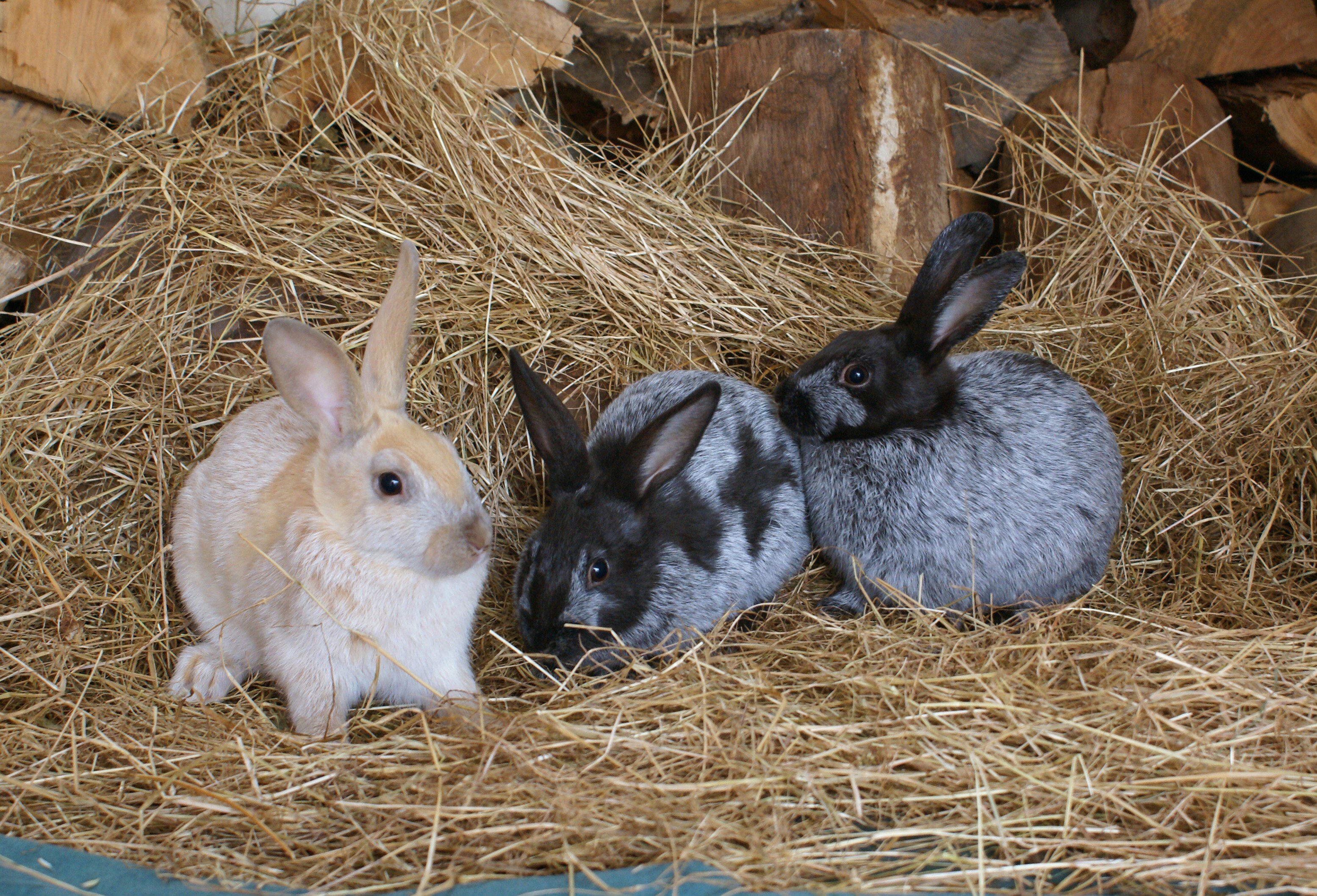
Even without a natural disaster, or the sudden death of a stud, livestock biodiversity is currently under threat. As agriculture increasingly prioritizes size, yield, and productivity, and animals continue to be cross-bred with commercial breeds, the number of minority breeds grows smaller and smaller. According to Willis, roughly 12 livestock breeds go extinct each month.
“Once they go, you can’t really recreate new ones that will meet the needs of the future,” he says. In the face of a rapidly changing climate, maintaining a diversity of breeds able to adapt to different weather patterns, temperatures, soil compositions, and overall environments will be critical.
For this reason, the Auckland Island animals might be especially important creatures for preservation. The breeds’ almost 200 years in relative isolation has paved the way for a peculiar kind of evolution, or at least some fearless adaptive behaviors. Auckland Island goats grew to be among the largest in New Zealand, while Auckland Island pigs are relatively small and markedly athletic. When the rabbits ate most of the grass on the island, Enderby cattle were driven to higher ground and steep cliff faces in pursuit of vegetation. According to Willis, they’ve been spotted eating seaweed. “We know they can digest it … Whether or not that’s a valuable trait, we don’t know.”
The most valuable trait of some of these animals, however, isn’t one that they’ve acquired in centuries of isolation. Rather, it’s one that they lack.

On the mainland of New Zealand, Living Cell Technologies (LCT) keeps a small herd of Auckland Island pigs in a secured, high-tech quarantine facility, where each one—according to Willis—is worth close to $450,000.
“Due to 200 years of isolation after they were left on the island, the Auckland Island pigs are free from viruses [and] pathogens which affect most other pigs,” says LCT CEO, Ken Taylor. While widespread pig-borne viruses have been a major obstacle in xenotransplantation, or grafting cells from animals for use in human therapies, the Auckland Island pigs haven’t been exposed to them.
Using cells sourced from the virus-free Auckland Island pigs, LCT is testing an experimental therapy for Parkinson’s Disease called NTCELL. Support cells, which secrete cerebrospinal fluid and support the natural function of the nervous system, are taken from a sedated pig’s choroid plexus and inserted in capsule form into a damaged site of the human brain. According to Taylor, the therapy is currently undergoing Phase IIb trials.
This is where the story of the Auckland Island pigs, in a way, comes full circle. It’s a story of human ingenuity that completely disfigures the planet—yet, somehow, as we scramble in the aftermath, we make room for innovation within the disaster we’ve created.
As of this year, most of the Auckland Islands are free of these magnificent mammalian pests, but the main island continues to bear feral pig, as well as cat, populations. Last year, Conservation Minister Eugenie Sage pledged two million dollars to complete plans for restoring the island to its predator-free status. While much of the devastation caused to vegetation will be reversible, it will likely take millions of dollars—and, according to the DOC, about ten years—to carry out the eradication.

“The logistics of running a project of this scale in such a remote location are immense,” says says Hanley-Nickolls. “Even just getting the staff and equipment to the island is difficult!” While the pigs will be hunted, finding and eradicating cats will require the development of an entirely new methodology.
Not to mention, it’s tough terrain—even for experts. “Auckland Island is quite hostile, large, and very difficult to get around,” says Willis. “People have just disappeared there, never to be seen again.”
According to Hanley-Nickolls, it will take a few years of securing funds and setting up proper infrastructure before the hunters head south. But if all goes according to plan, within the next decade, the pigs will disappear, making room for the albatross to safely nest, and the megaherbs to once again blossom.
With any luck, and lots of financing, there might be room for another expedition with Willis to ensure the pigs don’t vanish entirely. “It’s these rare breeds that give regions their identities, like the specific grapes or goat cheese they produce,” he says. “Without saving these breeds of animals, we lose communities … we lose history.” A hairy embodiment of how humans have colonized, scarred, and tried to heal the planet—all the way to the end of the Earth—is, perhaps, a history worth holding onto.
Gastro Obscura covers the world’s most wondrous food and drink.
Sign up for our email, delivered twice a week.


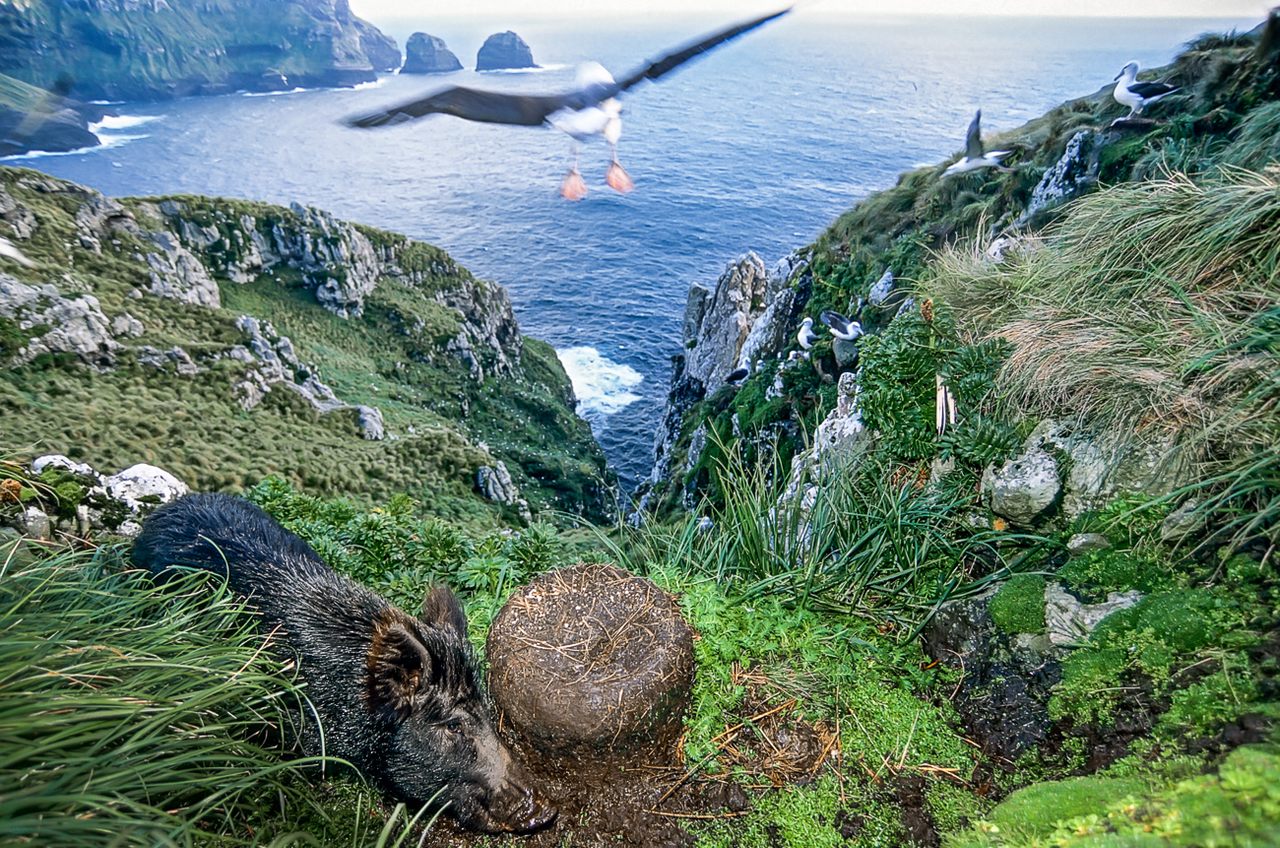



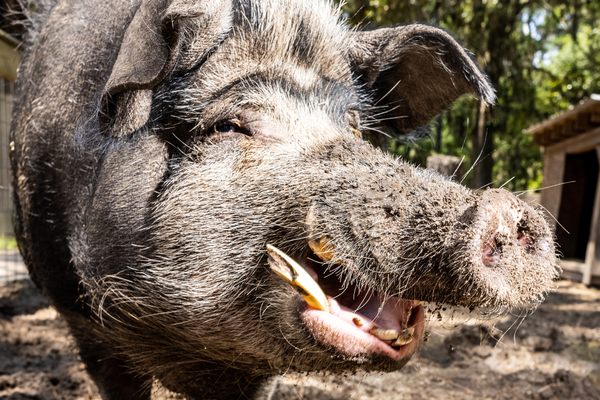
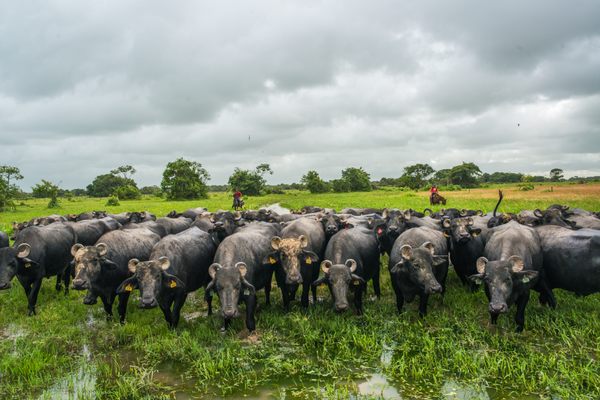















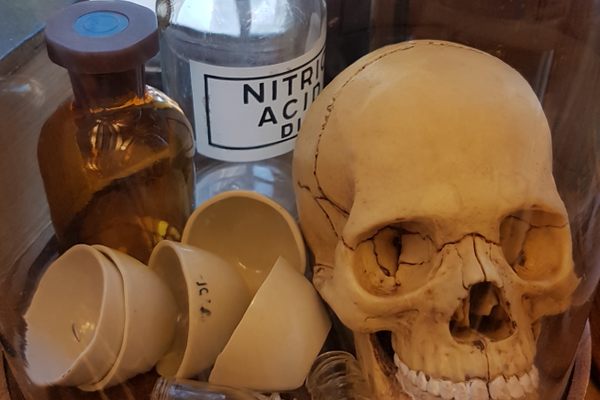
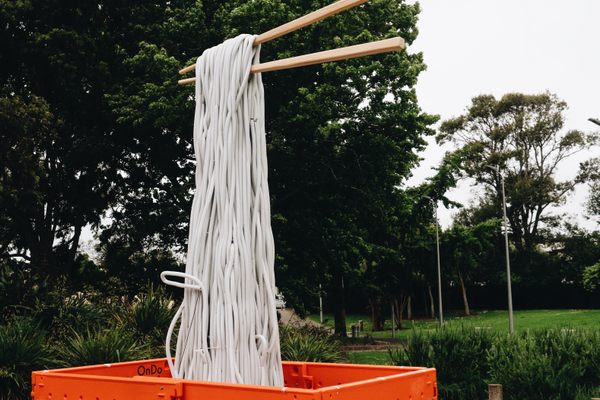


Follow us on Twitter to get the latest on the world's hidden wonders.
Like us on Facebook to get the latest on the world's hidden wonders.
Follow us on Twitter Like us on Facebook